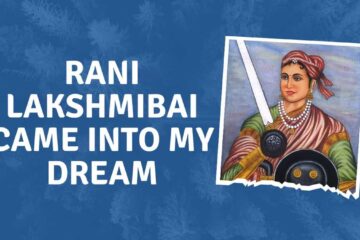Baisakhi Festival Essay: Baisakhi, also known as Vaisakhi, is a festival celebrated by Hindus and Sikhs in India and other parts of the world. The festival marks the beginning of the new solar year and the harvesting season in the northern parts of India. It falls on the 13th or 14th of April every year and is considered one of the most important festivals in the Indian calendar. In this article based on Essay on the Baisakhi festival (ਵਿਸਾਖੀ ਤੇ ਲੇਖ ਪੰਜਾਬੀ ਵਿੱਚ), we will cover 5 sets of essays in an easy and simple language containing 100 words, 300 words, 500 words, 10 lines and 20 lines.
Table of Contents
10 Lines Essay On Baisakhi Festival
Below are 10 lines on Baisakhi Festival.
- Baisakhi is a major harvest festival celebrated in India.
- The festival marks the beginning of the new solar year and the harvesting season in northern India.
- It is celebrated on the 13th or 14th of April every year.
- Baisakhi has a great cultural and religious significance, especially for the Sikh community.
- According to legend, the 10th Sikh guru, Guru Gobind Singh, formed the Khalsa Panth on Baisakhi day in 1699.
- The festival is celebrated with great enthusiasm, with people dressing up in traditional attire and performing Bhangra and Gidda dance.
- Traditional dishes like kheer, puri, and halwa are prepared and shared with family and friends during the festival.
- Baisakhi is also known as the Sikh New Year and the birth anniversary of Khalsa Panth.
- Apart from Punjab, the festival is also celebrated in other parts of India, such as Haryana and Himachal Pradesh.
- Baisakhi is a time for people to come together, forget their differences, and celebrate the joy of life.
Know about International Year of Millets 2023
20 Lines Essay On Baisakhi Festival
Below is 20 lines essay on Baisakhi Festival.
- Baisakhi, also known as Vaisakhi, is a major harvest festival celebrated in India.
- The festival is celebrated on the 13th or 14th of April every year and marks the beginning of the new solar year and the harvesting season in northern India.
- It has a great cultural and religious significance, especially for the Sikh community.
- According to legend, the 10th Sikh guru, Guru Gobind Singh, formed the Khalsa Panth on Baisakhi day in 1699.
- Hence, the festival is also celebrated as the Sikh New Year and the birth anniversary of Khalsa Panth.
- Baisakhi is a time for people to come together, forget their differences, and celebrate the joy of life.
- People dress up in traditional attire, usually in vibrant colors, and perform Bhangra and Gidda dance to the beat of the dhol.
- Bhangra is a folk dance performed by men, while Gidda is a traditional dance performed by women.
- The festival is also marked by the singing of traditional songs, known as Boliyan.
- Traditional dishes like kheer, puri, and halwa are prepared and shared with family and friends during the festival.
- The most popular dish, however, is the langar, a communal meal served in the Gurudwaras (Sikh temples).
- Apart from Punjab, the festival is also celebrated in other parts of India, such as Haryana and Himachal Pradesh.
- In Assam, the festival is celebrated as Rongali Bihu, while in West Bengal, it is celebrated as Naba Barsha.
- The festival is a time to express gratitude for the bountiful harvest and seek blessings for the future.
- It is a time for farmers to rest and enjoy the fruits of their hard work.
- Baisakhi also has historical significance, as it was on this day that the ninth Sikh guru, Guru Tegh Bahadur, sacrificed his life for religious freedom.
- The festival is a symbol of the resilience and unity of the Punjabi and Sikh communities.
- Baisakhi also promotes social cohesion and community service through the practice of langar.
- The festival is a celebration of the rich cultural heritage of Punjab and India as a whole.
- In conclusion, Baisakhi is a vibrant and colorful festival that celebrates the spirit of harvest, new beginnings, and community spirit.
Baisakhi Festival Essay in 100 Words
Baisakhi is a major harvest festival celebrated in India, especially in the northern state of Punjab. It is usually celebrated on the 13th or 14th of April every year. The festival marks the beginning of the new solar year and the harvesting season in northern India. People dress up in traditional attire, perform folk dances and sing traditional songs to celebrate the festival. The main attraction of the festival is the Bhangra dance, which is performed by both men and women. Traditional foods like kheer, puri, and halwa are prepared and shared with family and friends. The festival holds a great religious and cultural significance for people across India.
Baisakhi Festival Essay in 300 Words
Baisakhi, also known as Vaisakhi, is an ancient festival celebrated in the northern state of Punjab in India. It is a harvest festival that marks the beginning of the new solar year and the harvesting season in northern India. The festival is celebrated on the 13th or 14th of April every year, depending on the solar calendar.
The festival has a great cultural and religious significance for people in Punjab, as well as for the Sikh community. According to legend, the 10th Sikh guru, Guru Gobind Singh, formed the Khalsa Panth, a community of baptized Sikhs, on Baisakhi day in 1699. Hence, Baisakhi is also celebrated as the Sikh New Year and the birth anniversary of Khalsa Panth.
The festival is celebrated with great enthusiasm by people of all ages. People dress up in traditional attire, usually in vibrant colors, and perform Bhangra and Gidda dance to the beat of the dhol. Bhangra is a folk dance performed by men, while Gidda is a traditional dance performed by women. The festival is also marked by the singing of traditional songs, known as Boliyan.
Apart from dance and music, the festival is also known for the delicious food prepared on this occasion. Traditional dishes like kheer, puri, and halwa are prepared and shared with family and friends. The most popular dish, however, is the langar, a communal meal served in the Gurudwaras (Sikh temples).
In addition to Punjab, Baisakhi is also celebrated in other parts of India, especially in Haryana and Himachal Pradesh. The festival is celebrated with different names and customs in different regions. For instance, in Assam, it is celebrated as Rongali Bihu, while in West Bengal, it is celebrated as Naba Barsha.
In conclusion, Baisakhi is a vibrant and colorful festival that celebrates the spirit of harvest and the new solar year. It is a time for people to come together, forget their differences, and celebrate the joy of life.
Baisakhi Festival Essay in 500 Words
Baisakhi, also known as Vaisakhi, is a major festival celebrated in India, especially in the northern regions of the country. It is celebrated on the 13th or 14th of April every year and marks the beginning of the new solar year and the harvesting season. The festival has a great cultural and religious significance, especially for the Sikh community. In this essay, we will explore the history, significance, and celebrations of the Baisakhi festival, along with its association with Sikhism.
History of Baisakhi festival
Origin of Baisakhi: Baisakhi has its roots in ancient Hindu and Punjabi culture. It was originally celebrated as a harvest festival to give thanks to God for a bountiful harvest. It is believed that Baisakhi was first celebrated by the farmers of the Punjab region in ancient times.
Historical and cultural significance of Baisakhi
Baisakhi has a significant place in the Indian calendar, both culturally and historically. It marks the start of the solar year and is the time when the farmers of northern India begin harvesting their crops. The festival also has a historical significance, especially for the Sikh community. It was on this day in 1699 that the tenth Sikh guru, Guru Gobind Singh, formed the Khalsa Panth, a community of pure and devoted Sikhs who would uphold the values of the religion and protect the innocent.
Celebrations of Baisakhi festival
Rituals and customs associated with Baisakhi: Baisakhi is celebrated with great enthusiasm and joy across India. People dress up in traditional attire, usually in vibrant colors, and perform Bhangra and Gidda dance to the beat of the dhol. The festival is also marked by the singing of traditional songs, known as Boliyan. People visit Gurudwaras (Sikh temples) and seek blessings from the Guru Granth Sahib, the holy book of Sikhs.
Traditional foods and dishes prepared during Baisakhi
Baisakhi is also a time for feasting and sharing food with friends and family. Traditional dishes like kheer, puri, and halwa are prepared, and the most popular dish is the langar, a communal meal served in Gurudwaras.
Cultural events and fairs organized during Baisakhi
Baisakhi is a time for cultural events and fairs in many parts of India. In Punjab, the Baisakhi Mela is organized in various cities, including Amritsar and Ludhiana. The festival is also celebrated with great fanfare in other parts of India, such as Assam, West Bengal, and Himachal Pradesh.
Baisakhi festival in different parts of India
Regional variations in Baisakhi celebrations: Although Baisakhi is primarily a Punjabi festival, it is celebrated in different parts of India with their own unique variations. In Assam, the festival is known as Rongali Bihu, and in West Bengal, it is celebrated as Naba Barsha. In Haryana, it is celebrated as the harvest festival of Hola Mohalla.
Significance of Baisakhi in different Indian States
Baisakhi has different meanings and significance in different Indian states. For example, in Punjab, it is celebrated as the start of the Sikh New Year and the birth anniversary of Khalsa Panth. In West Bengal, it is celebrated as the start of the new year and is associated with the Goddess Durga.
Baisakhi festival and Sikhism
Baisakhi has a special significance in Sikhism and is considered a sacred festival.
Baisakhi’s association with the founding of Khalsa Panth
Baisakhi marks the day when Guru Gobind Singh founded the Khalsa Panth, a community of Sikhs who follow the five K’s – Kesh, Kangha, Kara, Kachera, and Kirpan. The guru also baptized the first five Sikhs and gave them the title of Panj Pyare.
Role of Baisakhi in Sikhism and its importance for Sikhs
Baisakhi is a significant festival for Sikhs, and they celebrate it with great devotion and dedication. They visit gurudwaras, offer prayers, and take part in Nagar Kirtan. They also organize langars, where people from all walks of life come together and share a meal.
In conclusion, Baisakhi is an essential festival that holds great significance in the Indian cultural and religious landscape. It marks the arrival of the new year, the beginning of the harvest season, and the establishment of the Khalsa Panth in the Sikh community. People across India celebrate it with enthusiasm, joy, and fervor, with regional variations in rituals and customs. It is a time for socializing, bonding, and feasting, bringing together people from all walks of life. Even in modern times, the festival of Baisakhi continues to hold immense relevance and remains an integral part of India’s cultural heritage.
Baisakhi Festival Essay – FAQs
You can find Baisakhi Festival Essay on the Studiously Yours blog.
The first Sikh guru was Guru Nanak Dev.
Baisakhi will be celebrated on April 14, 2023.
Punjabi New Year is also known as Baisakhi, which marks the beginning of the new solar year in the Punjabi calendar.
Khalsa Day is celebrated on Baisakhi, which marks the establishment of the Khalsa Panth by the tenth Sikh Guru, Guru Gobind Singh.
Baisakhi 2024 will be celebrated on April 13.
Baisakhi or Vaisakhi is a festival that marks the beginning of the new year in the Punjabi calendar and the harvesting season.
The Khalsa was founded by Guru Gobind Singh, the tenth Sikh Guru.
The “Panj Pyare” refers to the five beloved ones who were chosen by Guru Gobind Singh to form the nucleus of the Khalsa Panth.



0 Comments